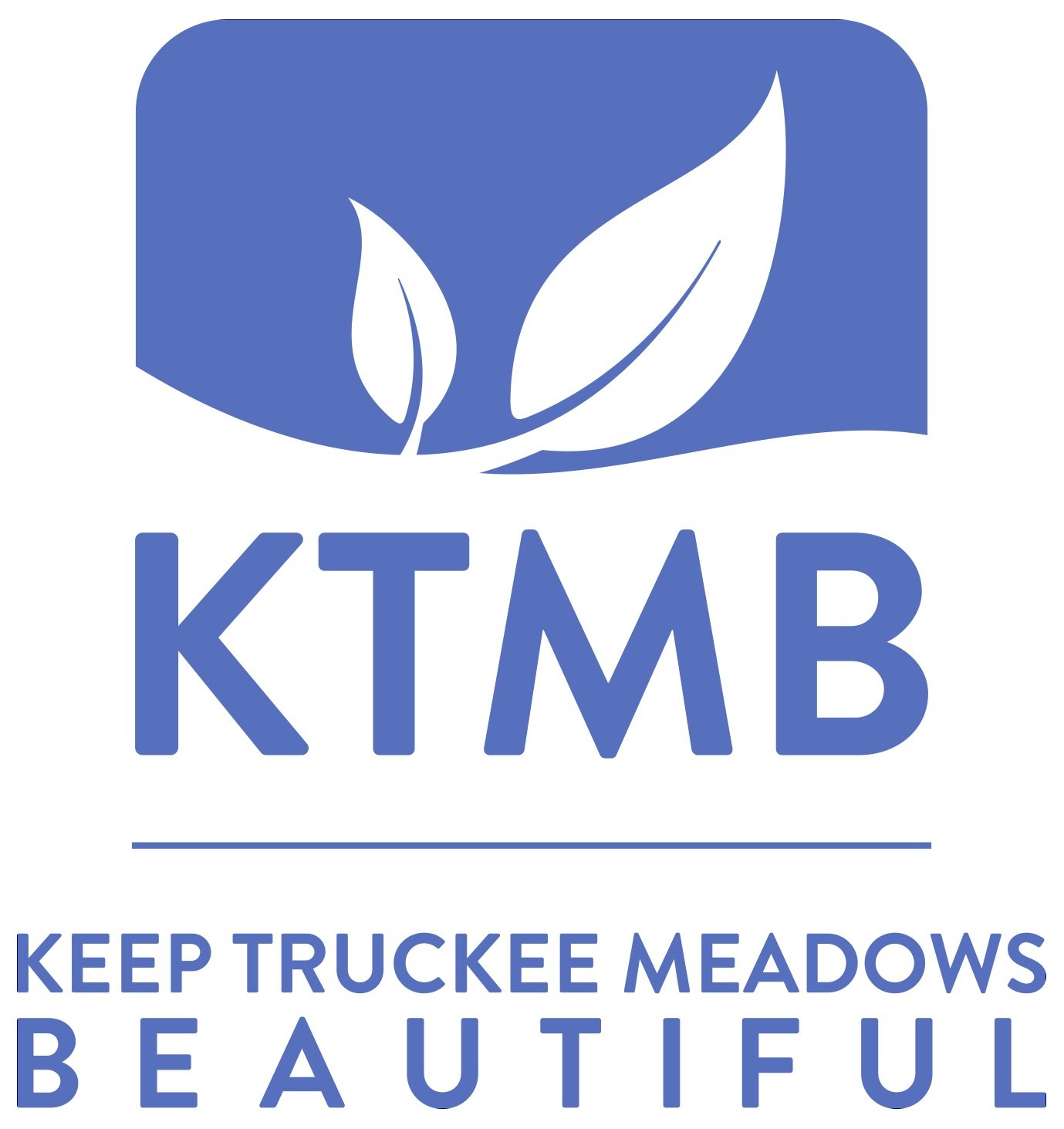Do you know we live in a watershed?
If you live on land, you live in a watershed. A watershed, also known as a drainage basin, is an area of land that drains or “sheds'' water from rain, snow, and irrigation into a body of water. The water moves over land via rivers, streams, and creeks and eventually flows into a larger body of water like lakes, bays, and oceans. Water can also drain underground into aquifers.
The Truckee River Watershed
If you live in the Reno-Sparks metropolitan area, you are part of the Truckee River Watershed. This watershed begins at Lake Tahoe in the Sierra Nevadas where water escapes via streams, creeks, and rivers. From Lake Tahoe, most of the water escapes through the Truckee River, which travels 125 miles downhill, passing through Reno and Sparks, and eventually draining into Pyramid Lake. What most of us don’t know is that our watershed is a terminal basin. This means the watershed does not drain into the ocean like most in the country. Our watershed drains internally into Pyramid Lake, a terminal lake with no outlet other than evaporation or seepage into the groundwater.
Because the Truckee River Watershed is a terminal basin, it runs a higher risk of becoming saline and is extremely sensitive to pollutants. Considering that the Truckee River Watershed provides us with about 80% of our drinking water, it is especially important to keep pollutants out of our watershed.
Nonpoint Source Pollution
Nonpoint source pollution is more than just a mouthful; it is believed to be one of the largest causes of deterioration of our water supply. So, what is nonpoint source pollution? Let’s begin by defining Point Source Pollution. Point Source Pollution is pollution that is easy to identify and comes from a single place. For instance, factories, oil refineries, and power plants can be sources of point-source pollution. Nonpoint Source Pollution cannot be traced back to a single source as it comes from many places. Picture a city after a thunderstorm. As rainwater flows over asphalt, it washes away oil that leaked from car engines, dog waste left on sidewalks, litter, pesticides, and fertilizer, all of which are nonpoint source pollutants. So where does this polluted water go? In order to protect our streets and properties from flooding, this runoff flows directly into ditches and storm drains. The water conduits deliver the stormwater to our waterways without treatment, resulting in a huge influx of pollutants in our waterways after a storm.
Here in the Truckee Meadows, fertilizers, herbicides, insecticides, motor oil, engine coolant, septic tanks, chemical runoff, and e. Coli bacteria all affect the overall quality of our ground, surface, and drinking water. Soil erosion is another issue within our watershed, but what exactly is it? Soil erosion is the weathering away of topsoil caused by water, wind or farming. Pesticides and other chemicals can get trapped in soil, polluting streams and rivers as the soil breaks apart. Soil erosion can also lead to mudslides and floods, negatively affecting the structural integrity of buildings and roadways. Sediments and other pollutants result in poor water quality, which affects algal growth, plant and animal life within the river, and ultimately the quality of our drinking water.
When our water is polluted by source and nonpoint source pollutants, water treatment plants have to work longer and harder to process the water, especially drinking water. This translates to increased costs for you and your community. While nonpoint source pollutants may not seem like a big deal, over time their impact adds up and that’s when they become a large problem.
So, what can be done?
Luckily, you can make a difference year-round! Here is a list of simple things we can do to make sure that only rain goes down the storm drain.
Volunteer for a cleanup or storm drain stenciling project with Keep Truckee Meadows Beautiful. Find out more at ktmb.org/volunteer.
Dispose of household hazardous waste like used oil, antifreeze, paints, and other chemicals properly, and never pour these down a storm drain. Use KTMB’s Recycling Guide to learn where to take these materials for proper disposal.
Report any illicit discharge by contacting the Nevada Department of Environmental Protection’s hotline 24/7 at 1-888-331-6337 or report it here: https://ndep.nv.gov/environmental-cleanup/spill-hotline.
Keep your trash or recycling from blowing out of your bins.
Make sure your sprinklers aren’t watering the street.
Take your car to the car wash. Car washing businesses have to collect and recycle their polluted, soapy water so it doesn’t flow into a storm drain.
Pick up after your pet on walks and avoid letting your pet do its business within 200 feet of a water body. Dog feces can contain up to 23 million fecal coliform bacteria known to cause cramps, intestinal illnesses, and kidney disorders in humans and can transmit over 65 diseases to humans.
Make sure only rain goes down the storm drain. Visit the Nevada Department of Transportation’s Love NV Waters program for more information on stormwater.
Consider adapting your lawn or garden to be river-friendly. One Truckee River’s River-Friendly Landscaping and Truckee Meadows Water Authority’s Water Efficient Landscape Guide are great resources to use.
Maintaining a healthy and native plant cover is a significant way to reduce erosion. Plant roots help to keep soil in place along the banks of the river and beyond. Covering the bare areas with mulch or straw is an effective method for preventing erosion from wind and rain. Acting as a surface cover over the soil, mulch and straw reduce the impact of raindrops striking the soil and cover it from the wind. A significant amount of the mulch produced every year from KTMB’s Christmas Tree Recycling Program is put to use along the river.
Resources:
Environmental Protection Agency
Truckee Meadows Water Authority
Nevada Department of Transportation
Nevada Division of Environmental Protection


